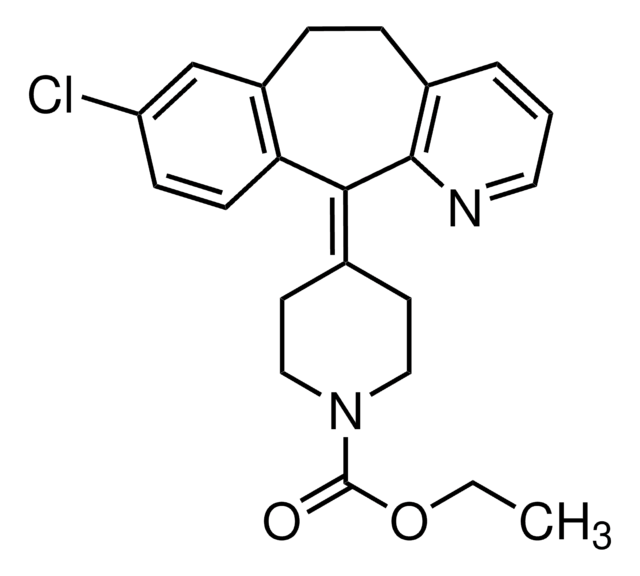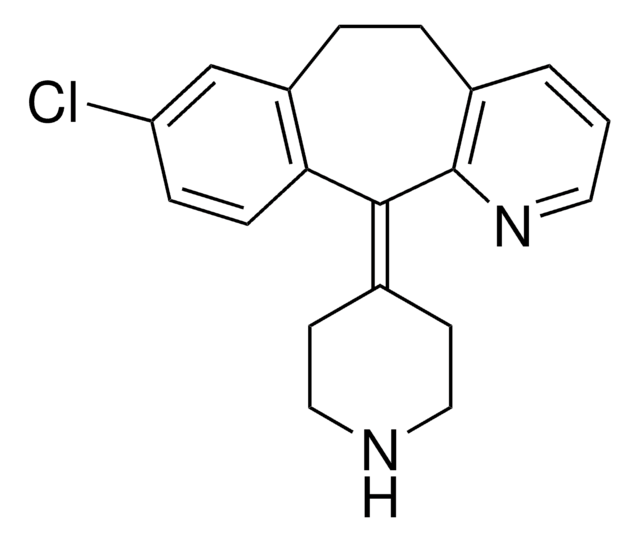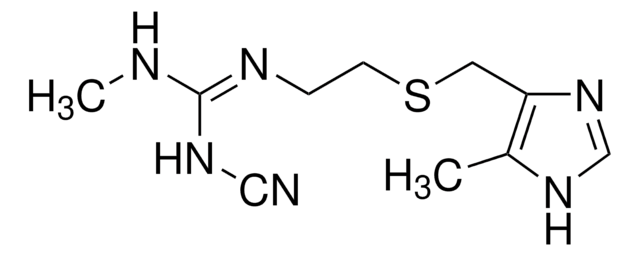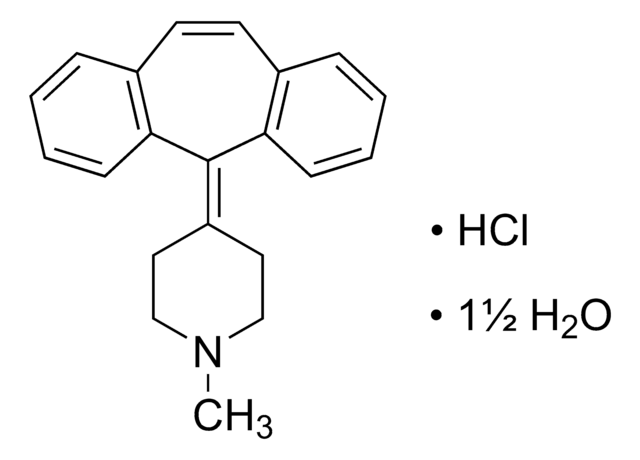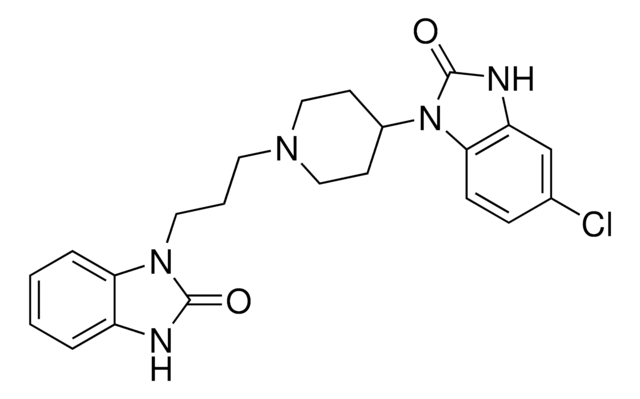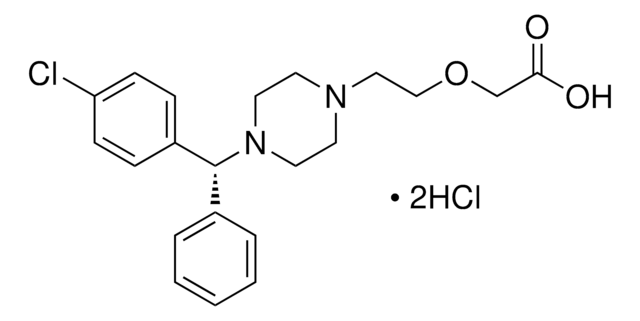L9664
Loratadine
≥98% (HPLC), powder
Sinónimos:
4-(8-Chloro-5,6-dihydro-11H-benzo[5,6]cyclohepta[1,2-b]pyridin-11-ylidene-1-piperidinecarboxylic acid ethyl ester, Loratidine
About This Item
Productos recomendados
Quality Level
assay
≥98% (HPLC)
form
powder
color
white
solubility
DMSO: soluble 50 mg/mL
H2O: insoluble
originator
Schering Plough
storage temp.
2-8°C
SMILES string
CCOC(=O)N1CC\C(CC1)=C2/c3ccc(Cl)cc3CCc4cccnc24
InChI
1S/C22H23ClN2O2/c1-2-27-22(26)25-12-9-15(10-13-25)20-19-8-7-18(23)14-17(19)6-5-16-4-3-11-24-21(16)20/h3-4,7-8,11,14H,2,5-6,9-10,12-13H2,1H3
InChI key
JCCNYMKQOSZNPW-UHFFFAOYSA-N
Gene Information
human ... CYP3A4(1576) , HRH1(3269) , KCNH1(3756) , KCNH2(3757) , PTAFR(5724)
rat ... Hrh1(24448)
¿Está buscando productos similares? Visita Guía de comparación de productos
Biochem/physiol Actions
Features and Benefits
related product
Storage Class
11 - Combustible Solids
wgk_germany
WGK 2
flash_point_f
Not applicable
flash_point_c
Not applicable
ppe
Eyeshields, Gloves, type N95 (US)
Elija entre una de las versiones más recientes:
¿Ya tiene este producto?
Encuentre la documentación para los productos que ha comprado recientemente en la Biblioteca de documentos.
Los clientes también vieron
Nuestro equipo de científicos tiene experiencia en todas las áreas de investigación: Ciencias de la vida, Ciencia de los materiales, Síntesis química, Cromatografía, Analítica y muchas otras.
Póngase en contacto con el Servicio técnico